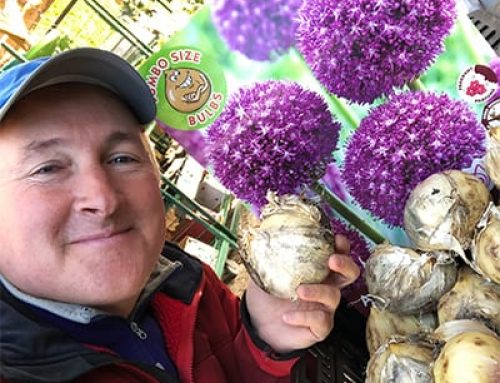Grow Milkweeds : Support beneficial butterflies and insects to add intriguing beauty to your garden
Asclepias is a genus of hardy perennial plants that belong to the family Apocynaceae and are commonly known as milkweeds. Milkweeds are well-known for their ecological importance as they provide nectar for various insects, including butterflies, moths, beetles, and other beneficial species, and are, famously, the primary larval host plant for the monarch butterfly but also for milkweed tussock moths and herbivorous beetles, among others.
Various butterfly and moth species have coevolved with milkweeds. The relationship between monarch butterflies and milkweeds is the most famous and one of the best examples of coevolution. Coevolution is a special kind of evolution involving close interacting relationships between different species. One species evolves in response to the other, and the other species evolves in response to the first. This back-and-forth process results in the development of specialized traits and adaptations and the evolution of new species.
Monarch butterflies lay their eggs exclusively on milkweed plants. This selective pressure has forced milkweeds to evolve more and more toxic compounds in their milky sap. Monarchs in turn evolved increasingly iron clad stomachs and the ability to sequester and store these toxic compounds that in turn protect them from predators. It has also pushed milkweeds to evolve into about 100 different species that grow in a range of different habitats from shady forests, to dry or rich fields, to moist soils and swamps all across North America.
Of all the plant genera you could plant in the garden, milkweeds are among the best for supporting a wide range of native insect species, not just the iconic and endangered monarch butterfly.While the main eastern population, which travels through North America from Mexico to southern Canada, is most famous, there is also a western population that overwinters in California and migrates north in summer. In warm years they can also, apparently, reach British Columbia’s Fraser Valley and Greater Vancouver!
Milkweeds are easy to grow in the perennial garden and can be a great addition to any yard offering nectar and larval food but also great beauty from the intricate and colourful flowers and unusual seed pods filled with silky seeds.
Here are a few tips for growing milkweeds:
- Choose the right species: There are over 100 species of milkweeds, so it’s important to choose the right one for your region and your garden. We usually offer 5-10 species and cultivars a year.
- Plant in a sunny location: Milkweeds thrive in full sun, so choose a spot in your garden that gets at least 6 hours of direct sunlight a day. Though there are some exceptions. A few species, like Asclepias verticillata, grow in shadier conditions.
- Provide adequate water: Milkweeds generally prefer well-drained soil, but they also need regular watering, especially during dry spells. Some species, like Asclepias incarnata and A. perennis, can be grown in evenly moist to wet soils.
- Avoid using pesticides: Milkweeds are important host plants for the larvae of many butterfly and moth species, so avoid using pesticides in your perennial garden which can harm these wonderful garden visitors.
- Be tolerant of leaf damage: If you are lucky enough to have beneficial insects, especially monarchs, lay their eggs on your milkweeds you’ll need to be tolerant of the fact that the caterpillars will want to munch on their foliage. But take heart, fellow gardeners. This means that your perennial yard is part of the circle of life and plays a role in supporting the fascinating native species that call your region home.
We grow a variety of different species and cultivars including:

Asclepias curassavica ‘Monarch’s Banquet’ – Tropical Milkweed
Asclepias curassavica ‘Monarch’s Banquet’ is a tender variegated milkweed with nectar-rich blooms in bright orange-reds all summer long.
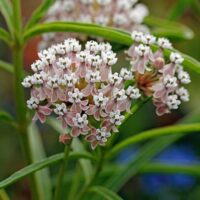
Asclepias ‘fascicularis‘ – Narrow-leaf Milkweed
Asclepias fascicularis is a monarch butterfly host with intricate pale pink and white flowers.

Asclepias incarnata ‘Cinderella’ – Swamp Milkweed
Asclepias incarnata ‘Cinderella’ has dense clusters of small rose pink and white vanilla-scented flowers that attract butterflies.
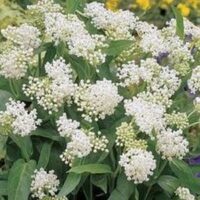
Asclepias incarnata ‘Ice Ballet’ – Swamp Milkweed
Asclepias ‘Ice Ballet’ has intriguing and ornate icy white milkweed flowers on strong stems. Beautify your garden and help the butterflies.
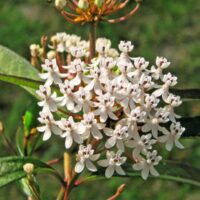
Asclepias perennis – White Swamp Milkweed
Asclepias perennis is a butterfly milkweed with white and pink flowers.
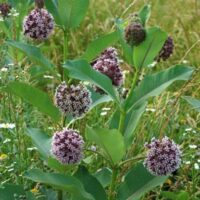
Asclepias syriaca – Common Milkweed
Support monarch butterflies and plant this beautiful eastern milkweed, Asclepias syriaca.
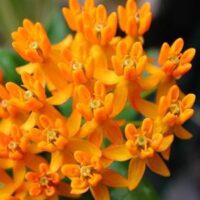
Asclepias tuberosa – Butterfly Milkweed
Asclepias tuberosa is a hot orange butterfly milkweed native to Eastern North America where it feeds monarch butterflies.
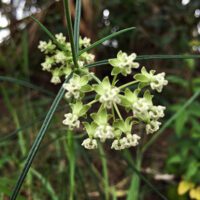
Asclepias verticillata – Whorled Milkweed
Asclepias verticillata is a rare eastern North American native known as the whorled milkweed.
Give Your Perennial Garden a Phoenix Perennials Touch:
At Phoenix Perennials, our offerings span over 5000 different plants available for in-person shopping at our garden centre and plant nursery in Richmond, British Columbia. Additionally, we annually offer more than 2500 different plants for mail-order shipping across Canada. Stay connected with our diverse offerings by signing up for our E-Newsletter and Alerts – your key to staying informed about our mail order and pre-order launches. Happy gardening!

